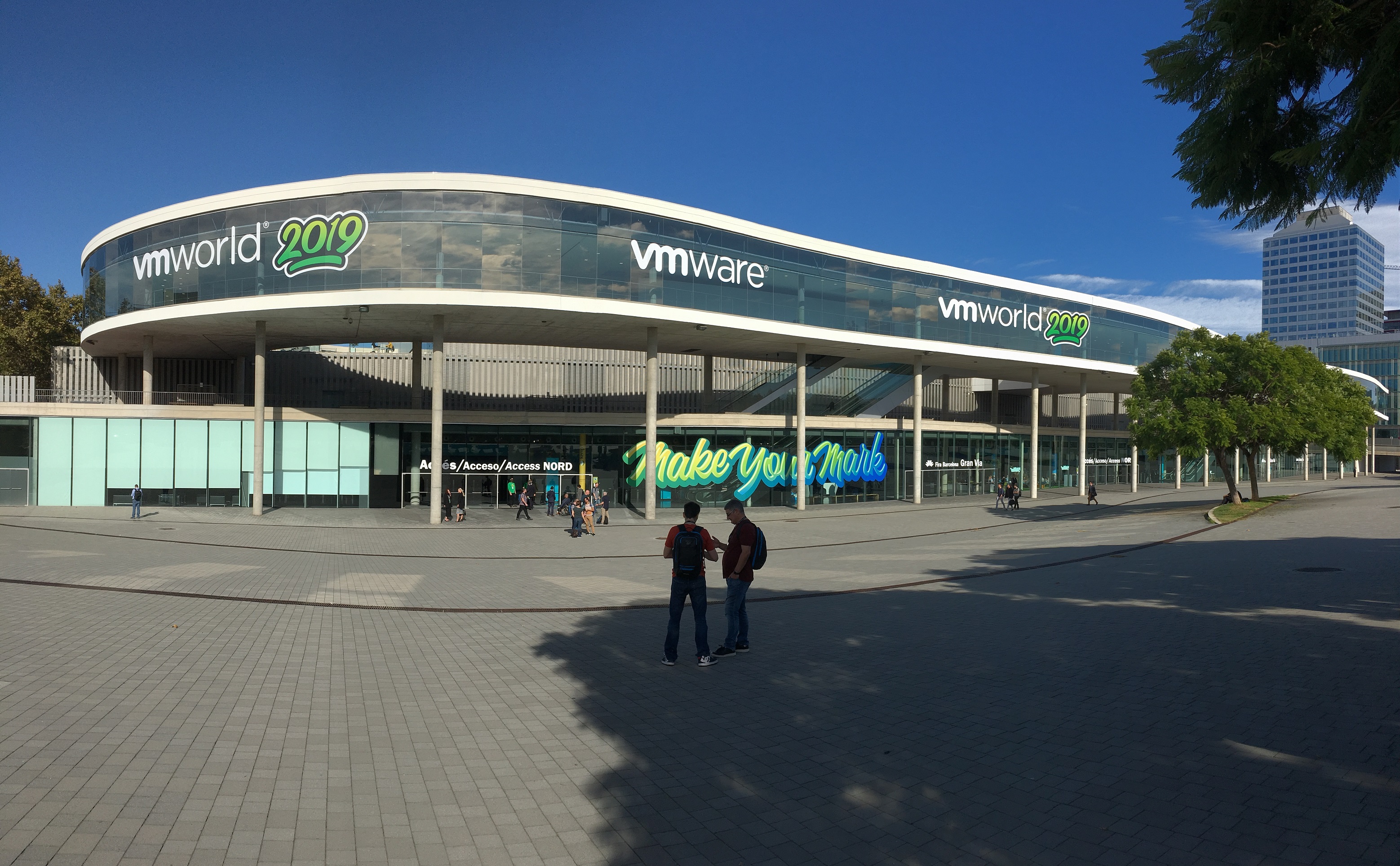
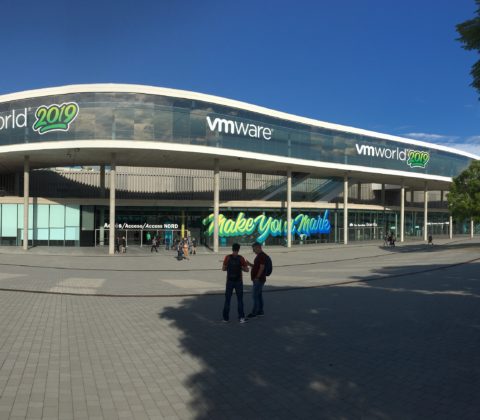
VMworld 2019 | Final thoughts
A few days after the VMworld 2019, I’m trying to take a higher look at this event after the information storm and before going back to the daily routine.
As a network guy, and as I explained it in my introduction article, it was my first step at VMworld and as soon as I arrived, I must admit it seemed like a total copy and paste of the Cisco Live (I do not know who copied the other, and it’s probably even a copy of other events, but it was striking for me after participating to both.). Just for fun, notice the differences with some of my pictures from both events, Cisco Live 2018 and VMworld 2019 :
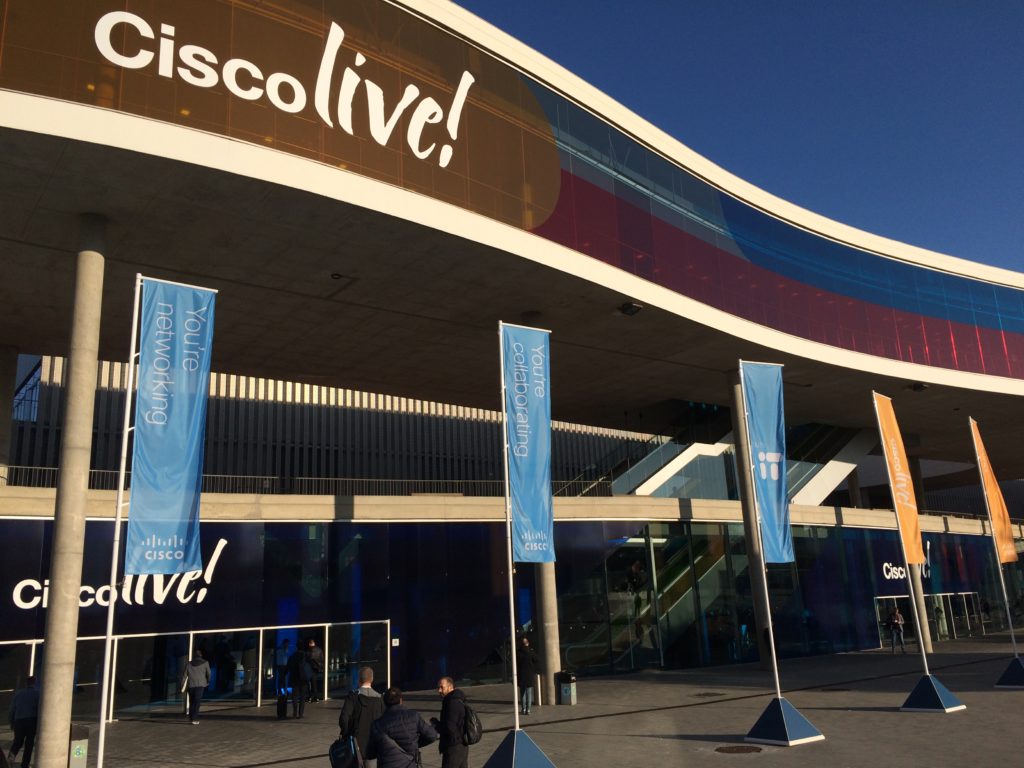
Fira Grand Via Barcelona 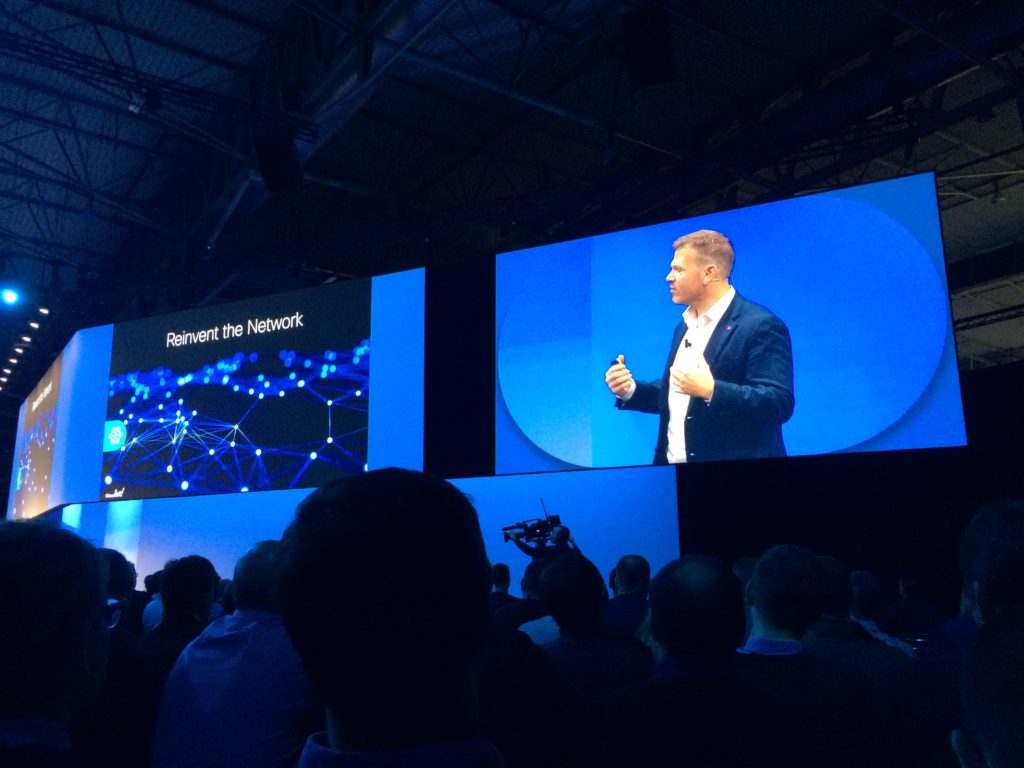
Cisco General Session 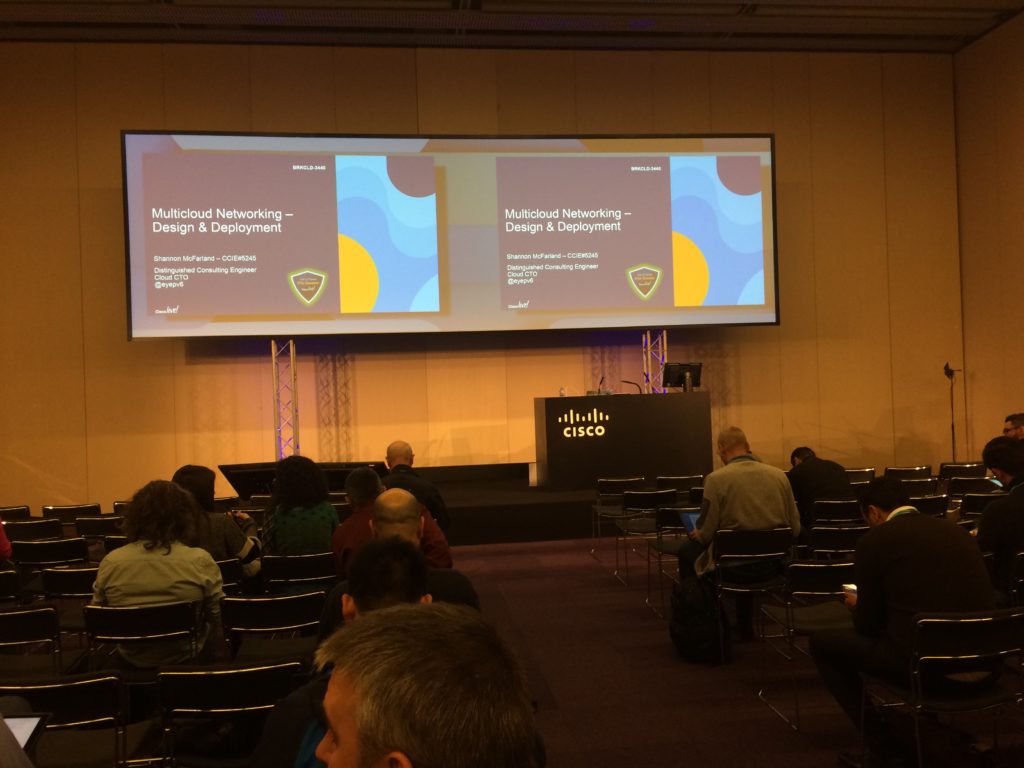
Cisco Live Breakout Session
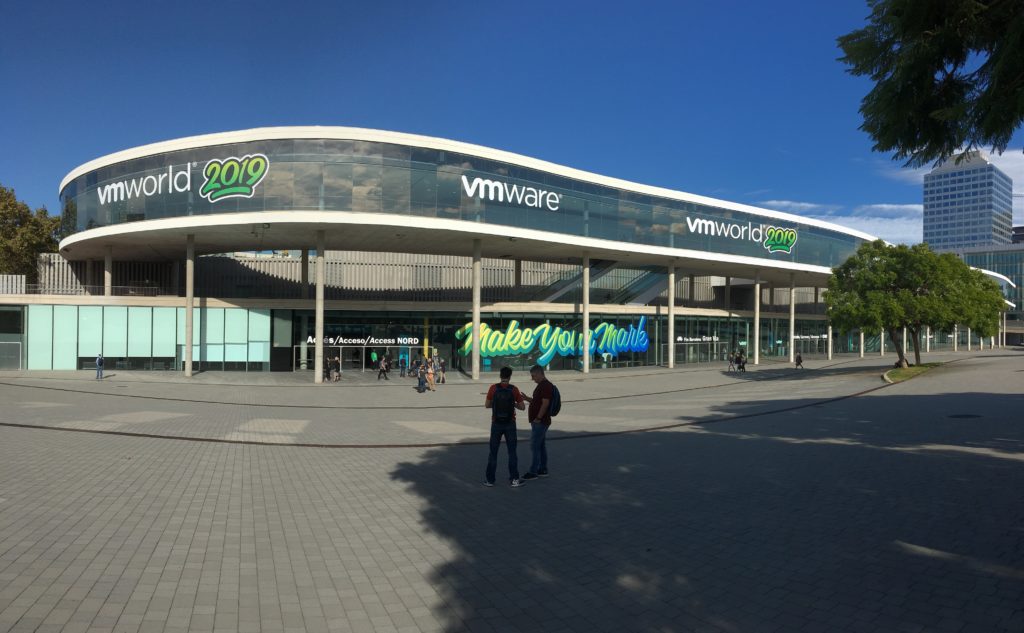
Fira Grand Via Barcelona 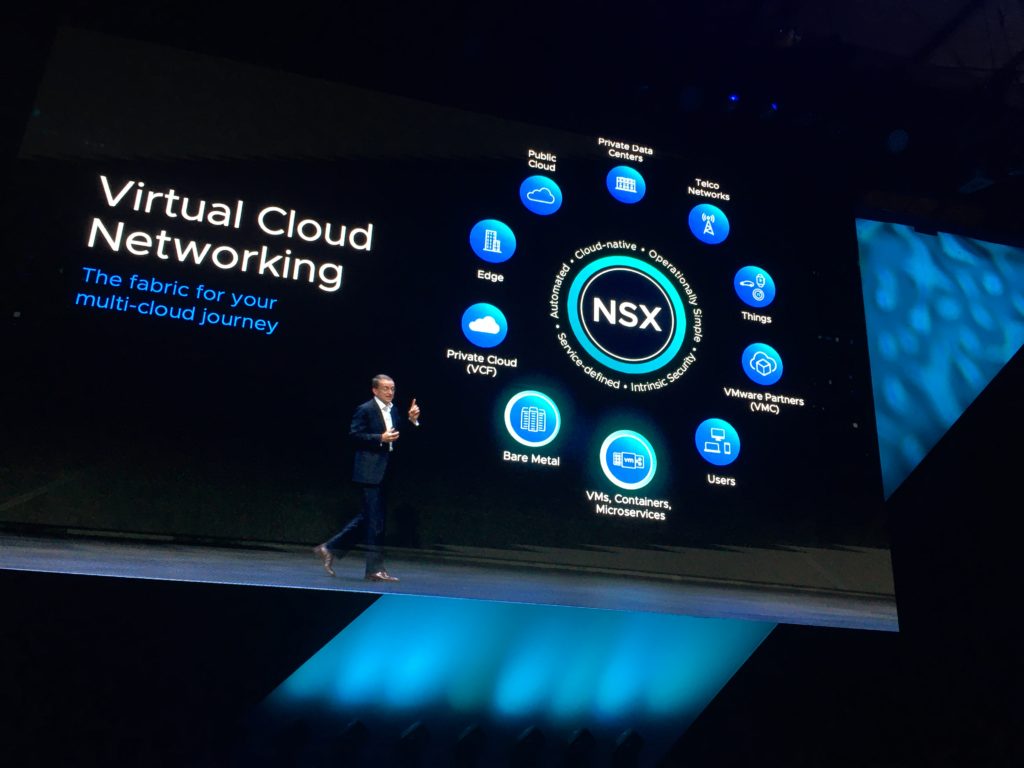
VMware General Session 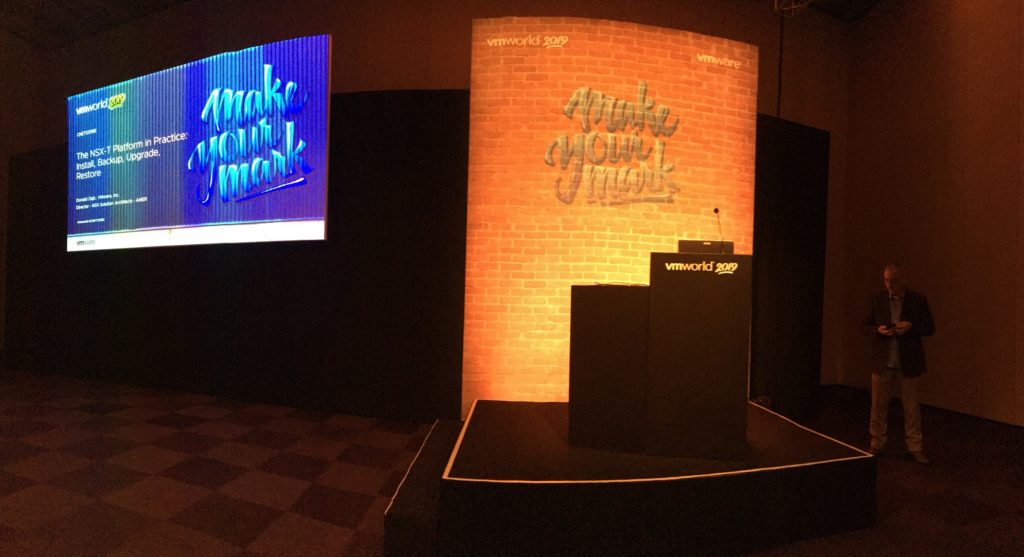
VMworld Breakout Session
That being said, I was there for the content, and it was quite interesting.
General Sessions
Cloud and Containers
If we remove the fact that the General sessions are of course mostly pure marketing from executives, as well as pre-registered demos of the products shipping next year, as a personal summary of these sessions, and most globally regarding the event himself is that VMware is taking the Cloud as already adopted by most of his clients. By my side, most of the clients I work for are just beginning their journey to the cloud. VMware is already looking (like other vendors) at the next steps being the “multi-cloud” and that’s what we see with the tools like Terraform that are made to help the client to configure a high-level configuration (who said “intent” ?) that can adapt to multiple different subsystems (cloud providers). VMware is updating its products to allow the move of workloads from any-to-any clouds (either Private or Public, indifferently).
Azure and AWS were here, followed by Google cloud platform and even OVH (good for the french tech to see this french company represented here, in the solution exchange forum near AWS and Azure).
VMware is also going all-in with Containers. Joe Beda, former Google employee who appears to be the first “committer” of Kubernetes and now VMware principal engineer was invited to speak about Kubernetes and all the relative products acquired by VMware recently like Bitnami (open-source catalog of components), Pivotal (a developer framework) and Spring. All the containers’ ecosystem are grouped inside VMware TANZU. From my side, I found the project pacific interesting for the future of enterprise IT, integrating Kubernetes into vSphere’s control-plane, allowing the operators to manage VM and Containers the same way.
What about networking?
There is also some Networking & Security news, even if there is no big announcement around the “Edge” and SD-WAN, VMware is improving NSX with even more security features like Distributed IPS/IDS and NSX intelligence (it’s only v1.0 but impressive GUI, again, and useful security recommendations for the micro-segmentation users).
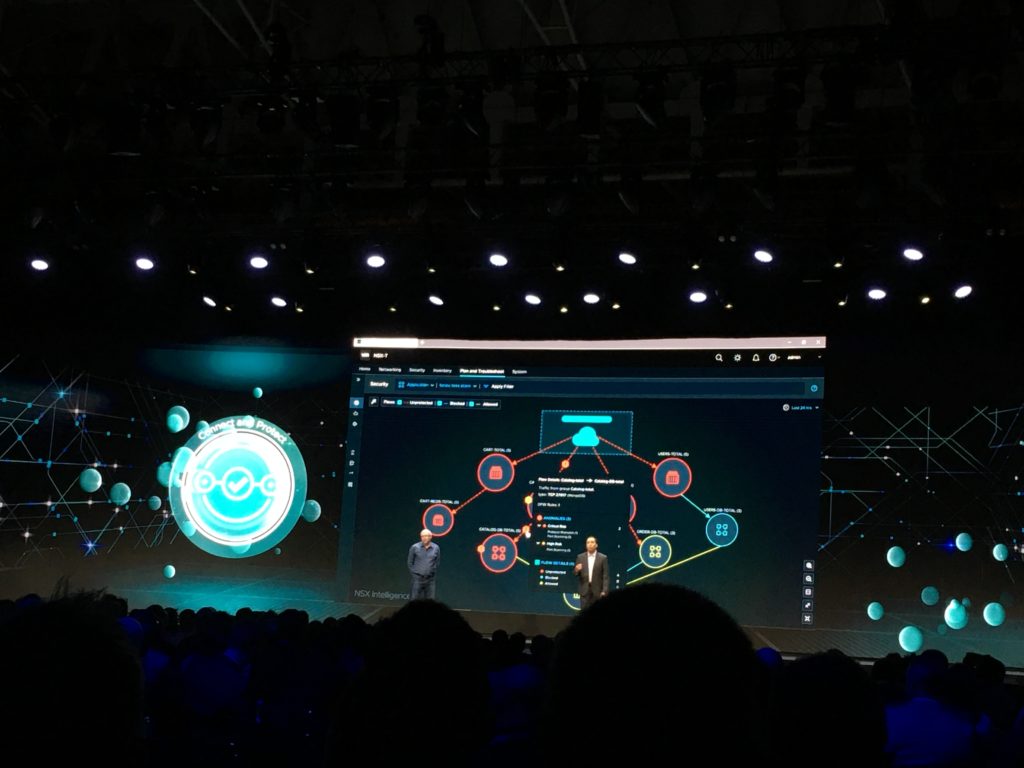
From all the VMware’s clients on stage, I liked the intervention of Pauline Flament, Executive director of Networking at Michelin, she was invited to speak about his on-going deployment of SD-WAN with Velocloud, ~8000 sites around the world. It started with the adoption of Office 365 in 2017 and the need to improve the user experience of the network, mainly based on legacy MPLS links. At that time, it was really difficult for her to make such an important choice of product as it was the beginning of SD-WAN, and Velocloud was at his beginning, surrounded by a multitude of other vendors. I also started to implement Velocloud at that time and it was (with Viptela) the pure-players with the most interesting features.
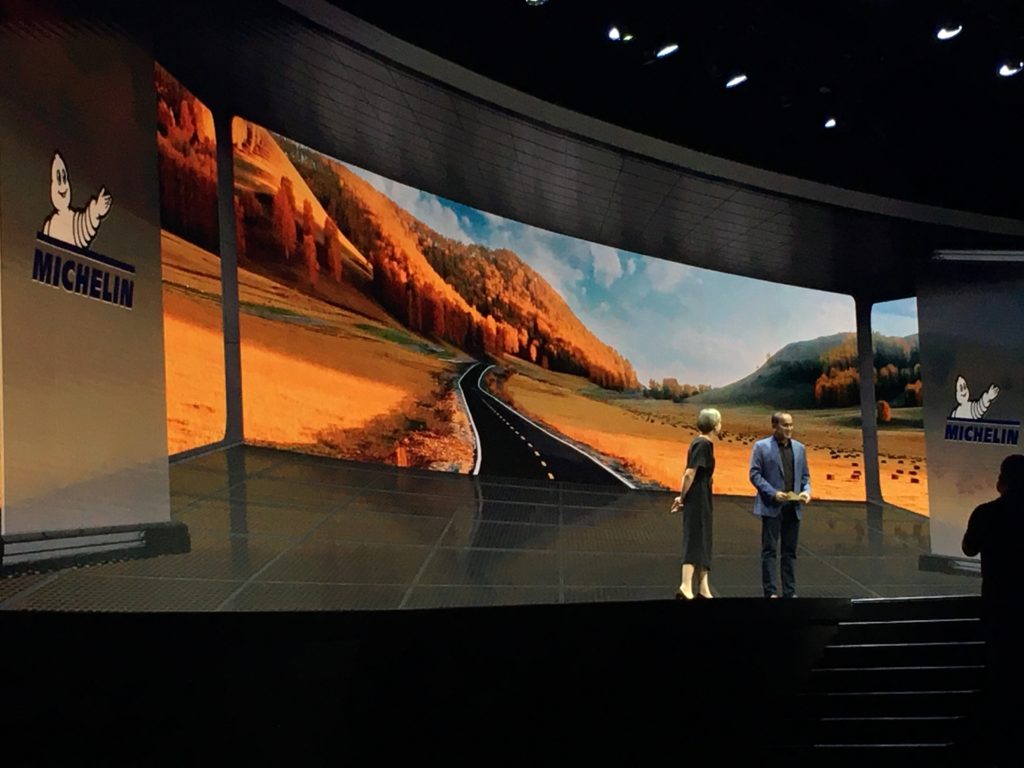
As a side note, this article by Greg Ferro made me laugh me because it was very relevant, just after coming out of the two Keynotes at this show, take a look at it.
Breakout sessions
The VMworld sessions were more focused on the high-level presentations of the products and less about advanced presentations of the features. Most of the demos I have seen was pre-registered and really simple.
I found later that it was mostly due to the fact that I registered late, most of the sessions that seemed interesting were already taken.
Hands-on Labs (#HoL)
This part was a good experience for me, I unregistered from my last Wednesday sessions to replace them with Hands-on labs instead. I took this opportunity to spend some more time on NSX-T and vRealize Network Insight.

All the VMware HOL are available for free here: https://labs.hol.vmware.com, you just need an account to get started.
What’s next for me?
I like the Velocloud product and I follow it since the beginning of the SD-WAN trend a few years back, his unique design with distributed gateways is really a key feature that I find awesome, coupled with the DMPO algorithm. I’ll continue to follow VMware SD-WAN by Velocloud :)
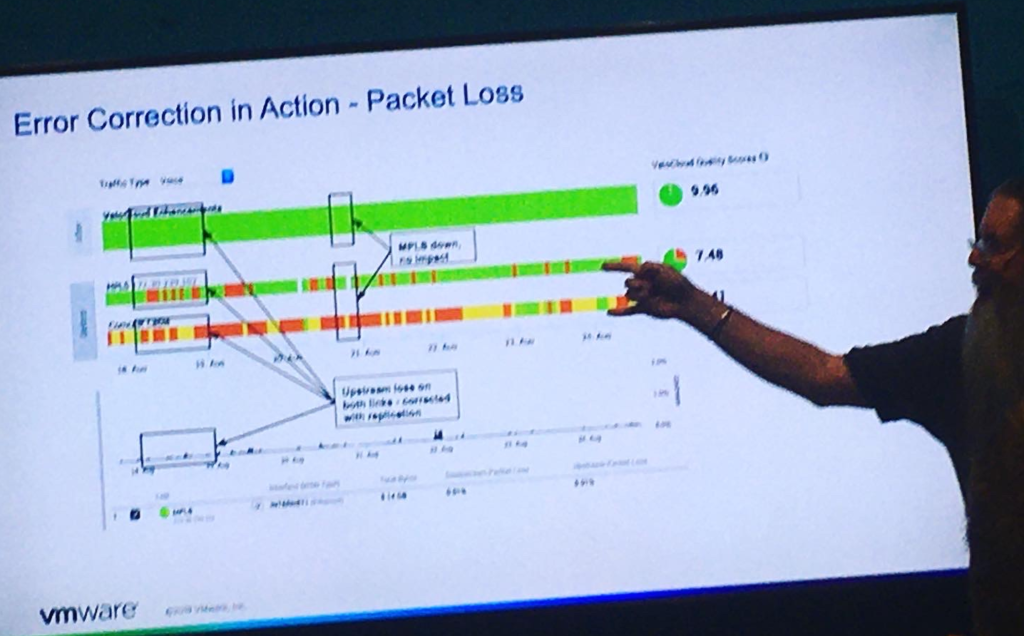
I recently followed the NSX product, and the recent upgrade from NSX-V to NSX-T is a big step for VMware, from VXLAN to Geneve, from mono-hypervisor to multi-hypervisor… The migrations from NSX-V to -T will be interesting.
I liked the vRNI product, VMware is definitely good at GUI :) the network visibility, even with the ACI leaf/spine underlay is interesting.
With all these definitely good networking products coming from VMware, it makes me think that I still have to upgrade the home lab.. more on this soon. I’m also thinking about following the VMUG community and advantages as well as the vExpert program.
Conclusion
Did I tick all the bullet points of the introduction article? For sure! and in addition to all this, this kind of event gives you the special motivation to continue learning and sharing with the IT community (at least for me). Let’s see how long it lasts :)
Special Bonus
I was disappointed to see that only some video presentations are available at https://videos.vmworld.com/ but not all the presentations, and not all of the .pdf aren’t available (maybe it’s temporary for EU). But in the meantime, I found an awesome Github made available by William Lam from the blog Virtually Ghetto where you can find most of the US sessions recorded as well as the full .pdf presentations: https://github.com/lamw/vmworld2019-session-urls/blob/master/vmworld-us-playback-urls.md
Enjoy!
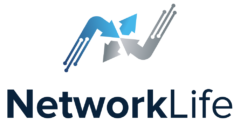


Comments are Disabled